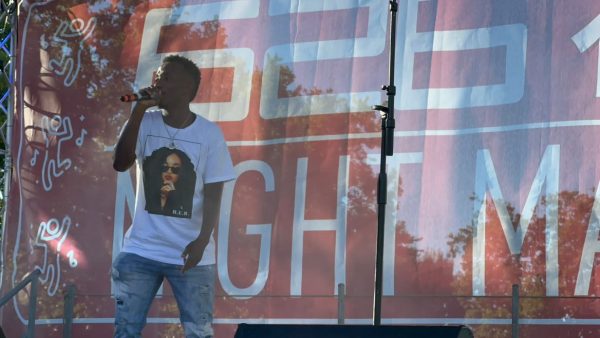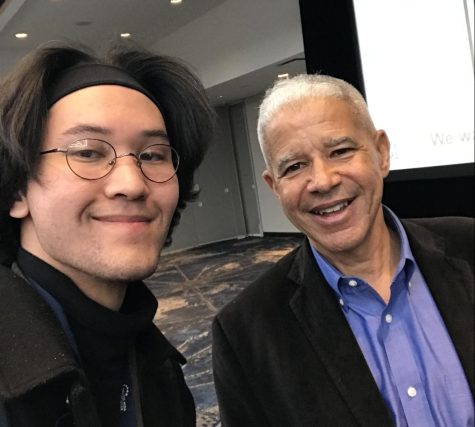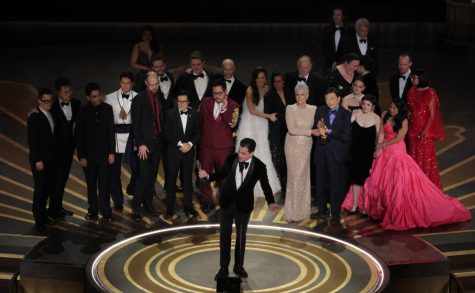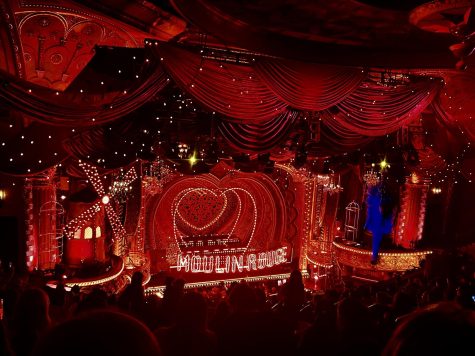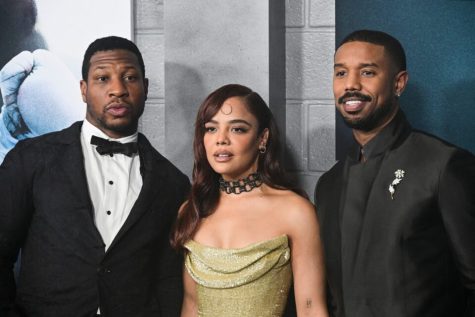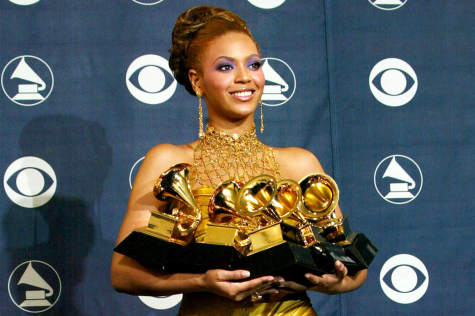Cutting through the tattoo stigma
March 8, 2017
As I sat sweating in the leather chair in a hole-in-the-wall tattoo parlor in Concord on a recent Saturday, the smell of the sterilization spray was uncomfortably reminiscent of a doctor’s office. While I am deathly afraid of shots and will pass out at the sight of blood draws, it wasn’t the tattoo gun that put me on edge; it was the anticipation of not knowing how painful it would be.
As I waited for the gun to make contact with my sterilized thigh, I distracted myself with the Blink-182 song circa 1999 playing in the background. The “$5 Charge for Whining” sign that hung next to framed sketches on the turquoise walls and a gargoyle sign above a hallway door, that warned, “Abandon all hope, ye who enter here,” provided for a counter-culture aesthetic that made me feel brave.
Tattoos have grown in popularity over the past few years. Twenty-nine percent of Americans have at least one tattoo, an eight percent increase from 2012, according to the Harris Poll, which surveyed 2,225 U.S. adults online from Oct. 14-19, 2015. Sixty-nine percent of Americans surveyed in the poll have two or more.
Casper Krites, a tattoo artist at Dv8 Tattoos and Body Piercing in Concord said tattooing is also taken more seriously as a profession. “I remember hearing ‘yeah that’s a cool hobby’ or ‘that’s nice when you’re young until you’re ready for a real job,’” he said. “I don’t hear that much anymore.”
Krites who has worked as a tattoo artist in Sacramento and the Bay Area for 13 years, said tattoos have become more of an art form and less of a counterculture movement or statement to society, due to an increase in fine artists in the industry.
“People want large visible tattoos,” he said. “They want custom pieces drawn by the artist more than flash off the wall.”
There are still people — like my dad, who I have yet to tell about my tattoo — that hold firm to the old-school stigmas that tattoos are for “thugs” or that they impede on one’s ability to get a job. Krites’ experience tattooing people from all walks of life contradicts those stereotypes. “I’ve met a neurosurgeon with her back and both sleeves done; doctors, professionals,” said Krites.
I have always been fascinated by tattoos as a method of self-expression, but could never make my mind up on what to get first. For my high school senior project, I created a picture book of tattoos and their corresponding stories. I interviewed an established artist, a WWII prisoner of war veteran who documented his seven escape attempts on his body and various friends and family members about the stories behind their tattoos.
I have four piercings: two stretched earlobes, a nose and a tongue piercing. Surprisingly, the 14-gauge hollow needle that slipped through my tongue like butter didn’t bother me one bit, but I anticipated that multiple tiny needles dragging through my skin would be an entirely new sensation.
My best friend who got her fifth tattoo directly before mine, assured me that I’d adjust quickly to the adrenaline-infusing discomfort. She promised it would feel like a cat scratch and emphasized how anticlimactic the experience could be by nearly falling asleep while our artist tattooed a large, ornate key onto the back of her upper arm.
“Ready?” He asked me as he dipped the buzzing gun into a small capful of black ink. “Have you eaten today? If you feel like you’re going to pass out, let me know and we’ll stop. It’s probably because your blood sugar is low.”
I assured him that I had eaten and he instructed me not to tense my leg muscles, which he said would make it hurt worse.
He started with the thick, gothic letters of “La Morte,” which captioned the anatomy textbook-style skull that claimed the center of my soon-to-be tarot card tattoo.
I designed the thing myself the night before and the day of, throwing in the iconic roman numerals for thirteen at the top of the card at the last minute.
It wasn’t a design many expected me to get because I hadn’t spoken to anyone about the concept before, but I fell in love with it the second the artist drew up the design, inspired by a combination of the images and ideas I’d found on the internet.
According to Krites, social media has changed the industry by giving artists and designs more exposure. “Pinterest brings us a lot of work,” said Krites. “So whatever is trending on there at the time is a lot of what we see. All of a sudden I’ll have 20 people coming in wanting an owl on their forearm then an infinity symbol on the wrist.”
The infinity symbol, which looks like a sideways number eight is one of the most popular tattoos right now, according to Krites.
Despite the “gothic” implications of the skull, the latin words and the foreboding number 13, my tarot tattoo doesn’t signify death. Traditionally, Death is the thirteenth card in the 22-card Major Arcana suit in most 78-card tarot decks, according to Biddytarot. com.
It’s often considered one of the most misunderstood and unpopular cards in Western culture, as it refers to transformation and change, rather than literal mortal death.
The lifelike design of the skull reminds me of my humanity and the overall design signifies the changes happening in my life. I am a 23-year-old graduating senior who recently ended a two and a half year relationship in January; you can say every aspect of my life is undergoing changes right now.
Years down the road, I will look at this tattoo as an artifact that documents who I was at this point in my life.
Sitting in the tattoo parlor with my artist carving the fine lines of the tarot card into my upper thigh, all I could focus on was my excitement for the finished product.
The tattoo definitely didn’t tickle and it didn’t put me to sleep.
To be honest, it felt like a tack was being pressed and dragged through my skin, but weeks later, I can’t even remember the pain, and now I have a beautiful work of art on my leg forever.











